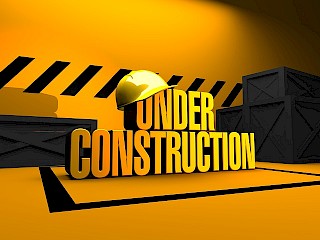
Normally the first point to establish is whether the expenditure is revenue, or capital in nature. This is important because if the expenditure is revenue, then (and in the case of an unincorporated business, assuming it has been incurred wholly & exclusively for the purpose of the trade) it should be entirely deductible against trading income. If, however, the expenditure is capital in nature, it is not deductible against trading income - but, depending on what has been acquired, relief against trading income may be available via capital allowances for some or all of the expenditure. Capital allowances are special deductions against trading income that offer some relief for capital expenditure incurred by a business in connection with the trade.
If the expenditure can be classified by the trader as revenue (as opposed to capital) this is generally preferred, especially if it results in a full and immediate deduction against trading income for all the expenditure, in the year in which it is incurred.
Expenditure which results in the acqusition of a new asset (e.g: buying a new building); the improvement of an existing asset (e.g: adding a new extension to a building); or initial repairs to a recently acquired asset (e.g: reconstructing a derelict building) may amount to capital expenditure, but the specifics of each case need to be examined. The distinction between capital or revenue can be quite subtle, for example, in Odean Theatres v Jones (1971), it was held that initial repairs to remedy normal wear & tear of recently acquired assets amounted to normal revenue expenditure.
For the rest of this blog we'll focus on relief for capital expenditure, assuming the expenditure in question is capital, rather than revenue expenditure.
The central problem with getting relief against trading income for capital expenditure on buildings is that, unless the expenditure falls into specific categories, capital allowances will not be available.
In general terms, expenditure on buildings, structures, land, and certain assets incorporated into buildings, do not attract capital allowances. This includes, but is not limited to:
- walls, floors, ceilings, doors, gates, shutters, windows, stairs
- mains services and systems for water, electricity and gas
- waste disposal systems
- sewerage and drainage systems
- shafts and other structures in which lifts, hoists, escalators and moving walkways are installed
- fire safety systems
- tunnels, bridges, viaducts, aquaducts, embankments, cuttings
- hard standings, roads, vehicle/ container parks
- docks, harbours, wharves, piers, marinas, jettys, dikes, sea walls, weirs, drainage ditches
Notwithstanding the above, HMRC will accept that expenditure on the following items is not regarded as expenditure on buildings, structures etc, and therefore can attract capital allowances in the appropriate circumstances:
- machinery
- gas and sewerage systems provided mainly to meet the requirements of the qualifying trade or to serve plant & machinery used in the trade
- manufacturing or processing equipment, including storage and display equipment, counters, checkouts and similar
- cookers, washing machines, dishwashers, fridges, washbasins, sinks, baths, showers, sanitaryware, furniture and furnishings
- hoists
- sound insulation provided mainly to meet the requirements of the trade
- computer, telecomms and surveillance systems
- refrigeration or cooling equipment
- fire alarm systems, sprinkler and other equipment
- burglar alarm systems
- strong rooms & safes
- partition walls - if moveable and intended to be moved in the course of the trade
- decorative assets provided for the enjoyment of the public in hotels, restaurants etc
- advertising hoardings, signs, etc
- swimming pools
- glasshouses constructed to incorporate devices which provide an environment for the growing of plants
- cold stores
- caravans used mainly for holiday lettings
- buildings provided for testing aircraft engines
- moveable buildings intended to be moved in the course of the trade (for example, portacabins moved by a builder from site to site)
- the alteration of land for the purpose of installing plant or machinery
- dry docks
- jetties or similar provided mainly to carry plant or machinery
- pipelines or underground ducts or tunnels for carrying utility conduits
- towers to support floodlights
- silos provided for temporary storage; storage tanks
- slurry pits or sileage clamps
- fish tanks or fish ponds
- rails, sleepers and ballast for a railway or tramway
- structures and other assets providing the setting for any ride at an amusement park or exhibition
- fixed zoo cages
There are also special rules for expenditure connected with:
- thermal insulation of buildings
- personal security
- software and rights to software
- certain film expenditure
- integral features (see below)
Picking up on the last point, expenditure on electrical systems, cold water systems, heating and ventilation systems, lifts, escalators and moving walkways incorporated into a building, may all attract capital allowances. This can be valuable, indeed it is said that in some cases, traders have managed to claim capital allowances for integral features representing up to 20% of the full cost of a building. On a million pound building, that's a lot of tax relief!
Beware that if your business intends to buy an existing building from another trader, to be able to secure capital allowances on any pre-existing integral features, there is a particular election procedure that needs to be observed. Contact us for further details.
This article focuses on relief for trading businesses; different rules apply to property investment businesses. Advice should, of course, always be sought regarding your specific circumstances.



